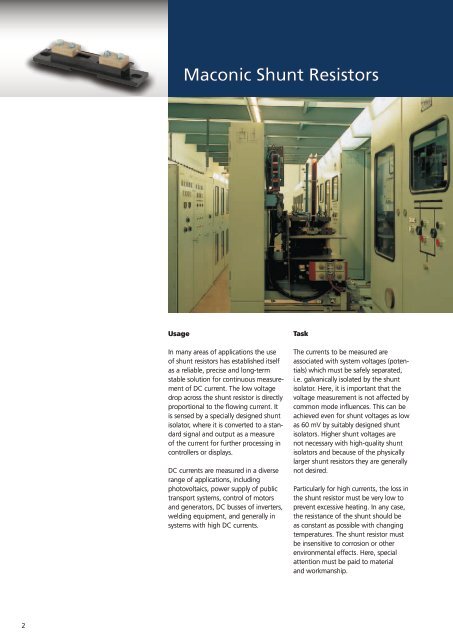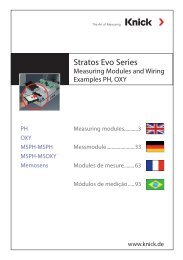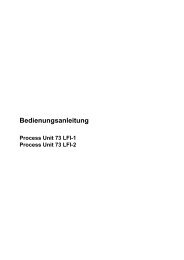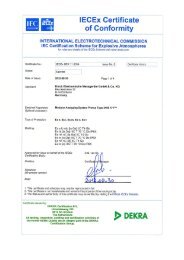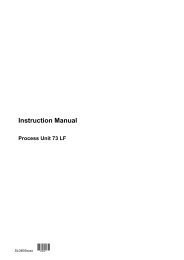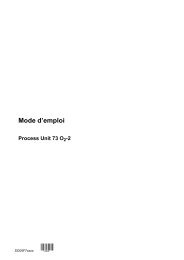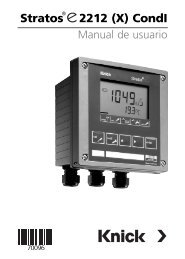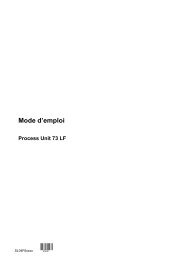Maconic Shunt Resistors - Knick Elektronische MeÃgeräte GmbH ...
Maconic Shunt Resistors - Knick Elektronische MeÃgeräte GmbH ...
Maconic Shunt Resistors - Knick Elektronische MeÃgeräte GmbH ...
Create successful ePaper yourself
Turn your PDF publications into a flip-book with our unique Google optimized e-Paper software.
<strong>Maconic</strong> <strong>Shunt</strong> <strong>Resistors</strong><br />
Usage<br />
In many areas of applications the use<br />
of shunt resistors has established itself<br />
as a reliable, precise and long-term<br />
stable solution for continuous measurement<br />
of DC current. The low voltage<br />
drop across the shunt resistor is directly<br />
proportional to the flowing current. It<br />
is sensed by a specially designed shunt<br />
isolator, where it is converted to a standard<br />
signal and output as a measure<br />
of the current for further processing in<br />
controllers or displays.<br />
DC currents are measured in a diverse<br />
range of applications, including<br />
photovoltaics, power supply of public<br />
transport systems, control of motors<br />
and generators, DC busses of inverters,<br />
welding equipment, and generally in<br />
systems with high DC currents.<br />
Task<br />
The currents to be measured are<br />
associated with system voltages (potentials)<br />
which must be safely separated,<br />
i.e. galvanically isolated by the shunt<br />
isolator. Here, it is important that the<br />
voltage measurement is not affected by<br />
common mode influences. This can be<br />
achieved even for shunt voltages as low<br />
as 60 mV by suitably designed shunt<br />
isolators. Higher shunt voltages are<br />
not necessary with high-quality shunt<br />
isolators and because of the physically<br />
larger shunt resistors they are generally<br />
not desired.<br />
Particularly for high currents, the loss in<br />
the shunt resistor must be very low to<br />
prevent excessive heating. In any case,<br />
the resistance of the shunt should be<br />
as constant as possible with changing<br />
temperatures. The shunt resistor must<br />
be insensitive to corrosion or other<br />
environmental effects. Here, special<br />
attention must be paid to material<br />
and workmanship.<br />
2


